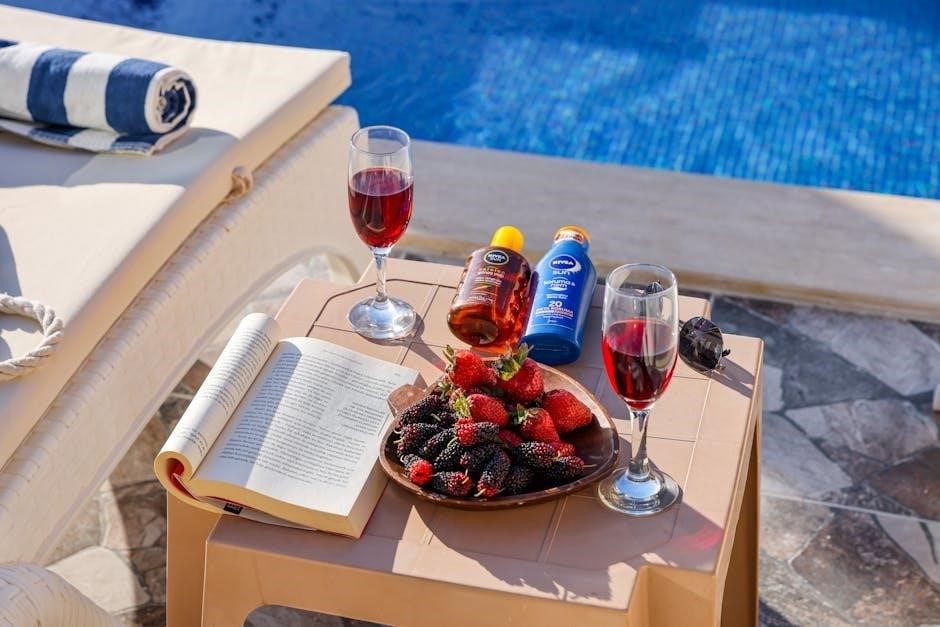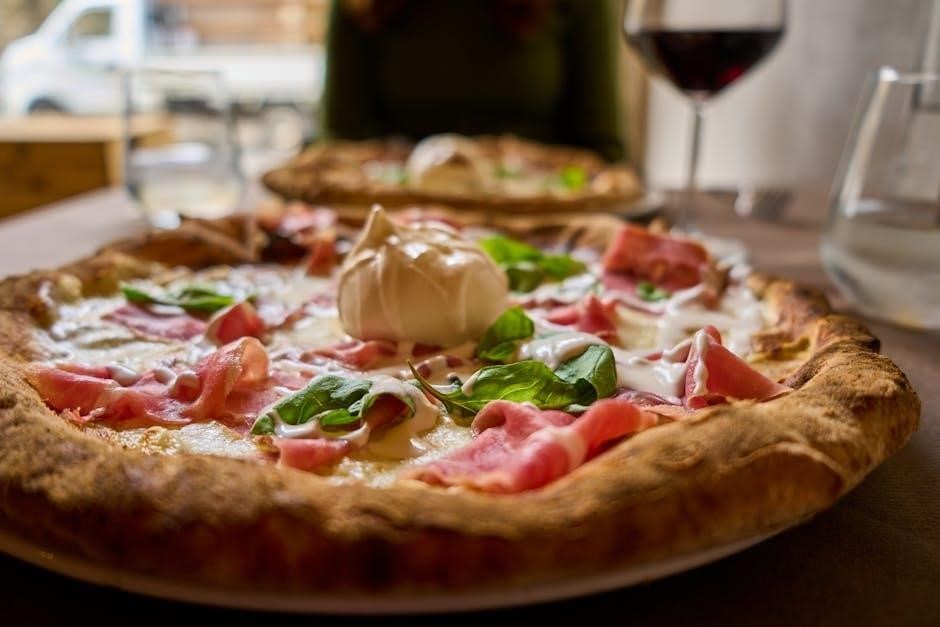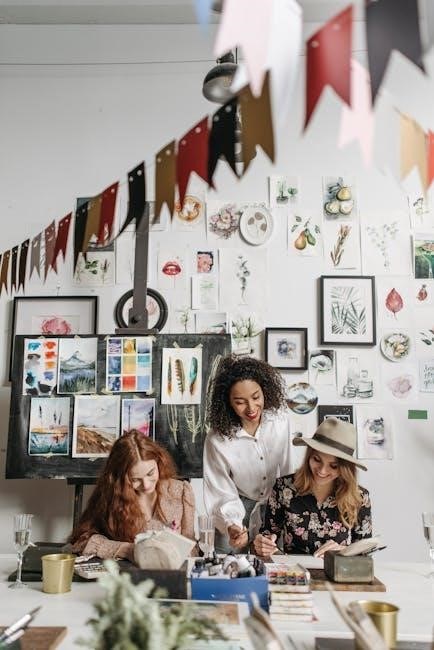Discovering wine can be exciting, start with basics, learn about types, and explore flavors, using online resources and wine stores for guidance always helps beginners․
Getting Started with Wine
To begin, visit a reputable wine store and consult with the staff, they can offer valuable recommendations and guidance․
When selecting a wine, consider your budget and personal taste preferences, this will help you make an informed decision․
Learning about different types of wine and their characteristics can also be helpful, online resources and wine tutorials are available․
Start with a few bottles and experiment with various styles, this will allow you to develop your palate and discover your favorite wines․
Remember, the key to getting started with wine is to be open-minded and willing to try new things, don’t be afraid to ask questions and seek advice from experts․
By taking these steps, you can set yourself up for a enjoyable and rewarding wine drinking experience․
Wine Consumption and Storage
Most wine is consumed within 24 hours of purchase, so it’s best to buy wine that’s ready to drink․
Proper storage is crucial to maintaining the quality of wine, a cool, dark place with minimal temperature fluctuations is ideal․
Wine bottles with corks should be stored on their side to keep the cork moist, while screw-top bottles can be stored upright․
It’s also important to consider the space and budget you have available for storing wine, as this will impact your purchasing decisions․
By understanding how to properly store and consume wine, you can enjoy your wine at its best and make the most of your investment․
This will help you to appreciate the different characteristics of wine and enhance your overall wine drinking experience․

Wine Aging and Storage
Proper wine aging requires a dark, cool space with minimal temperature fluctuations always․
Proper Wine Aging Techniques
To age wine properly, it’s essential to store bottles in a dark, cool space with minimal temperature fluctuations, ideally between 50-60 degrees Fahrenheit․
This slows down the aging process, allowing the wine to develop its flavors and aromas․
Bottles with corks should be stored on their side to keep the cork moist, while screw-top bottles can be stored upright․
It’s also important to minimize vibrations and movements, as these can disrupt the sediment and affect the wine’s quality․
By following these techniques, you can help your wine age gracefully and bring out its full potential, resulting in a more complex and enjoyable drinking experience․
Proper wine aging techniques require patience, but the end result is well worth the wait, allowing you to savor your wine at its best․
Factors Affecting Wine Aging
Several factors can impact the aging process of wine, including temperature, humidity, and light exposure․
Temperature fluctuations can cause the wine to age too quickly or unevenly, while high humidity can lead to mold and cork degradation․
Light exposure, especially UV rays, can also affect the wine’s flavor and color, causing it to become over-oxidized․
Additionally, the type of grape, wine region, and winemaking techniques used can also influence the aging potential of the wine․
Understanding these factors can help you better store and age your wine, allowing it to develop its full potential and resulting in a more enjoyable drinking experience․
By considering these factors, you can optimize the aging process and preserve the quality of your wine․

Wine Aeration and Tasting
Wine aeration enhances flavors, aromas, and overall tasting experience greatly always․
Importance of Wine Aeration
Wine aeration is a process that enhances the flavors and aromas of wine, making it more enjoyable to drink․ According to experts, aeration can soften tannins and release the wine’s full potential․ It is recommended to try wines both aerated and not to determine which ones benefit from aeration․ Generally, wines with high tannin levels require more aeration, while older wines may not need it as much․ A good rule of thumb is to prioritize aeration for young wines with high tannin levels․ By aerating wine, drinkers can experience a more balanced and refined taste, making it an essential step in the wine tasting process․ This simple step can elevate the overall wine drinking experience and help beginners appreciate the complexities of wine․ Wine aeration is a simple yet effective way to improve wine quality․
Systematic Approach to Wine Tasting
A systematic approach to wine tasting involves evaluating the wine’s appearance, aroma, and flavor․ This method helps to identify the wine’s characteristics and quality․ To start, look for online resources such as YouTube videos and downloadable cheat sheets that provide a step-by-step guide to wine tasting․ By following this approach, wine drinkers can develop their palate and learn to appreciate the nuances of different wines․ The systematic approach to wine tasting involves using a specific methodology to evaluate the wine, which helps to ensure a consistent and accurate assessment․ This approach is useful for both beginners and experienced wine drinkers, as it provides a framework for evaluating and comparing different wines․ Using this method, wine enthusiasts can refine their tasting skills and enhance their overall wine drinking experience․ Wine tasting becomes more enjoyable and informative․

Building a Wine Collection
Creating a wine collection requires space, budget, and patience, consider these factors carefully always․
Starting a Wine Collection

To begin building a wine collection, consider the amount of space available for storage and the budget allocated for wine purchases․ It is essential to have a cool, dark place with minimal temperature fluctuations to store the wine․ The number of bottles to start with depends on personal preferences and storage capacity․ Some wine enthusiasts start with a small collection of six bottles, while others may begin with a larger quantity․ When selecting wines for the collection, it is crucial to research and understand the different types of wine, their characteristics, and aging potential․ This knowledge will help in making informed decisions when purchasing wine for the collection, ensuring a well-rounded and enjoyable selection of wines to appreciate over time, and a good starting point for any wine collection․
Expanding Your Wine Knowledge
Expanding wine knowledge involves exploring various wine regions, grape varieties, and wine styles․ Online resources, wine books, and wine courses can provide valuable information on wine appreciation․ Visiting wine stores and talking to wine experts can also enhance knowledge and understanding of wine․ Joining a wine club or attending wine tastings can offer opportunities to taste different wines and learn from others․ Additionally, wine blogs and social media platforms can provide access to wine reviews, ratings, and recommendations, helping to expand wine knowledge and stay updated on the latest wine trends and releases, and discover new wines to enjoy and share with others, and to explore the world of wine in a fun and engaging way, with many resources available to help․
Wine journey ends with newfound appreciation, using online resources and wine stores for guidance always helps beginners learn and discover new wines slowly․
Final Tips for Wine Beginners
As a beginner, it is essential to remember that wine is a journey, and it’s okay to make mistakes․ Start by exploring different types of wine, and don’t be afraid to ask for help․ Wine stores and online resources are great places to learn about wine․ When tasting wine, use the systematic approach to tasting, which includes looking, swirling, smelling, and tasting․ This will help you to appreciate the different flavors and aromas of wine․ Additionally, consider keeping a wine journal to track your progress and note your favorite wines․ With time and practice, you will become more confident in your ability to choose and enjoy wine․ By following these tips, you will be well on your way to becoming a wine enthusiast․ Wine knowledge is vast, so keep learning and exploring․
Be First to Comment